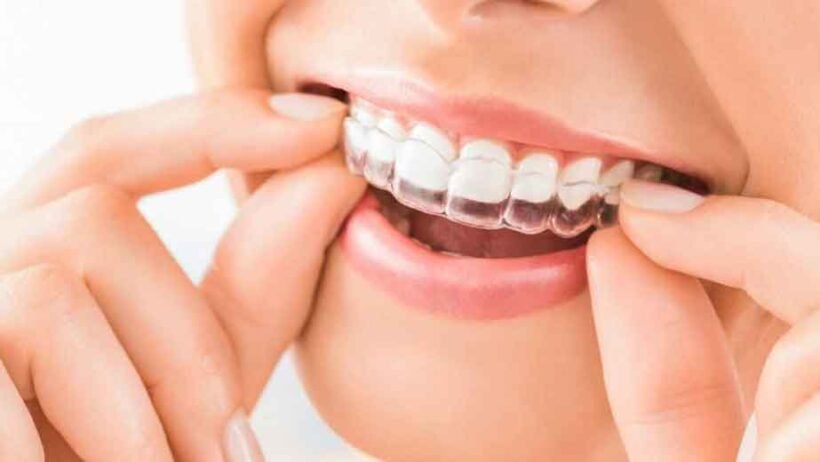For years, Invisalign has been widely recognized as a clear and discreet alternative to traditional braces, appealing to individuals who want to improve their smile without noticeable metal wires. While many people believe Invisalign is only intended for minor cosmetic corrections, advancements in technology have significantly expanded its capabilities. Today, Invisalign can address a broad range of dental alignment issues, from small gaps to more complex bite problems. We will explore whether Invisalign is truly limited to minor teeth adjustments or if it has evolved into a more comprehensive solution for orthodontic needs, helping patients achieve both functional and aesthetic goals.
Understanding the Scope of Invisalign Treatment
- Dispelling the Myth of Limited Use
The perception that Invisalign is solely for minor alignment cases often comes from its early introduction to the market, when it was primarily used for straightforward corrections. Back then, the clear aligner system was ideal for minor crowding, small gaps, and slight misalignments. However, over the past two decades, advancements in 3D scanning, treatment planning software, and aligner materials have transformed Invisalign into a viable option for more moderate and even some complex cases.
Patients with overbites, underbites, crossbites, or moderate crowding can now benefit from Invisalign in North Vancouver treatment, provided their specific dental condition is suitable. The key factor is not the severity alone but the combination of patient compliance, treatment planning, and the dentist’s ability to customize the aligners for precise movements. This means that what was once considered a cosmetic-only treatment is now a functional solution for many different orthodontic goals.
- Treating More Than Cosmetic Concerns
Invisalign is often marketed for its aesthetic appeal, but its scope extends well beyond cosmetic enhancement. The clear aligner system can address structural and bite-related issues that impact oral health, not just appearance. For example, misaligned teeth can cause uneven wear, jaw discomfort, and difficulty maintaining proper oral hygiene. In many cases, Invisalign can reposition teeth to improve bite alignment, reducing the risk of tooth damage and gum problems in the future. By carefully planning each stage of tooth movement, dentists can ensure that functional improvements go hand-in-hand with visual results. This broader application means Invisalign is not just about achieving a straighter smile but also about creating a healthier and more balanced bite. Even patients who initially seek treatment for aesthetic reasons often end up benefiting from improvements that support long-term dental health.
- Addressing Moderate and Complex Cases
While traditional braces are still the preferred option for certain complex cases—especially those involving severe skeletal discrepancies—Invisalign has proven effective for many moderate cases once thought to be beyond its capabilities. With the use of attachments, precision cuts, and elastic bands, Invisalign can now guide teeth into more precise positions, making it possible to manage more challenging orthodontic problems. The technology also allows for better control over root movement and tooth rotation, which expands its treatment possibilities.
For instance, moderate overcrowding that requires arch expansion can now be addressed with aligners, as can some cases of crossbite correction. Although each case must be individually assessed, the idea that Invisalign is only for minor adjustments is outdated. Many patients who would have previously been directed toward braces now find aligners to be a suitable alternative without sacrificing treatment effectiveness.
This dentist who does dental implants in Syracuse NY adds that despite these advancements, clear aligners may not be the ideal solution for all complex cases, such as those involving major jaw alignment issues. In such situations, a hybrid approach combining aligners with traditional orthodontic tools can be used to achieve optimal results. This flexibility ensures that every patient can receive the most appropriate and effective treatment plan for their unique needs.
- The Role of Compliance in Treatment Success
One of the biggest differences between Invisalign and braces is the responsibility placed on the patient. While braces work continuously without removal, Invisalign requires patients to wear the aligners for 20–22 hours a day for optimal results. This means that even if Invisalign can technically handle more complex cases, its success depends heavily on the patient’s willingness to follow instructions. For more involved treatments, missing aligner wear time can slow progress or compromise results. This is an important factor in determining whether Invisalign is the right choice. Dentists often recommend Invisalign for patients who are motivated and disciplined, as these qualities can make the difference between a successful outcome and extended treatment. Even for moderate or complex cases, aligners can work just as effectively as braces when worn as instructed, but patient cooperation remains a critical element of the process.
- Making the Right Choice for Your Needs
Determining whether Invisalign is suitable for your dental needs requires a professional assessment that considers both the complexity of the alignment issues and your lifestyle preferences. Some patients may prioritize comfort and aesthetics, making Invisalign a strong choice, while others may need the continuous pressure and control offered by braces. It is also worth noting that Invisalign can be part of a hybrid treatment plan, where braces are used for a short period before switching to aligners for the final stages of treatment. This flexible approach allows patients to enjoy the benefits of both systems while addressing their unique challenges. Ultimately, the choice between Invisalign and other orthodontic options should be based on a careful evaluation of treatment goals, oral health status, and the practicality of wearing aligners consistently. The good news is that Invisalign’s expanded capabilities mean far more people are candidates than when it was first introduced.
Invisalign is no longer limited to minor teeth adjustments. Through technological advancements, it can now address a much wider range of orthodontic concerns, from cosmetic enhancements to functional bite improvements. While there are still certain cases where traditional braces may be more effective, many moderate and even some complex alignment issues can be successfully treated with Invisalign.
The key to success lies in proper case assessment, customized treatment planning, and patient commitment to wearing aligners as directed. For those seeking a discreet and versatile option for straightening teeth, Invisalign has evolved into a powerful tool that goes far beyond its early reputation. By understanding its capabilities and limitations, patients can make informed decisions about whether this modern approach to orthodontics fits their goals and lifestyle.








